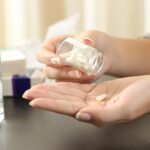As a child, I recall reading articles attempting to quantify the worth of a human body, not in terms of personal value or labor potential, but solely based on the market price of its constituent chemicals. The figure that stuck with me was a mere $1.98. A pittance for what is considered the pinnacle of creation.
Wired magazine’s editors recently revisited this intriguing concept. Writer Patrick Di Justo meticulously researched the market values of over 50 components of the human body, calculating their total worth. To arrive at a final valuation, he operated under two key assumptions: firstly, that all substances within the body could be fully recovered, and secondly, that the practicality and cost of extraction were irrelevant. These assumptions, while simplifying the calculation, highlight the theoretical nature of the exercise.
On a basic chemical level, our intrinsic worth remains surprisingly low. The phosphorus in your body might fetch around $7.12, potassium $5.95, and a dozen other substances combined would only add up to approximately $4.00, bringing the total chemical value to a modest $17.18.
But what happens if we consider the value of the body’s more complex components, such as organs and intricate molecules? Di Justo estimated the value of each lung at $58,200, the heart at $57,000, and the kidneys at $91,400 each. However, the true value lies in the body’s fluids, tissues, and proteins. While the liver itself might be worth $54,100, it also produces over 22 grams of transferrin, a protein essential for iron processing, valued at $18,900 per gram, totaling a staggering $419,920.20 – more than seven times the value of the organ itself. Your DNA, according to Di Justo’s calculations, could fetch over $9 million, while bone marrow, the body’s most valuable asset, is estimated at an astounding $23 million.
This brings the total market value of a human body to a staggering $45,618,575.82. A substantial increase from the initial $1.98. There’s a certain satisfaction in knowing that we function as complex bioproduction facilities, churning out a wealth of valuable products, even if we have no intention of selling them off. However, perhaps it would be even better when the value of our bodies plummets, much like the stock of a failing dot-com company.
This decline in value is inevitable, and it’s driven by innovation and progress. The business world, fixated on building value, often overlooks its ability to destroy value by making scarce resources abundant and difficult tasks easy. A watch that accurately told time was once a king’s prized possession, but now they’re readily available for ten dollars from street vendors. Computers that once cost millions and occupied entire buildings now power talking dolls priced at $20. Ideally, the substances contributing to our body’s $46 million value – like hydrocortisone ($5.75 worth) or insulin ($23.52 worth) – will eventually become cheap and commonplace. How would that make us feel? Not like a million dollars, but perhaps like that original $1.98. And what could be better than that?
